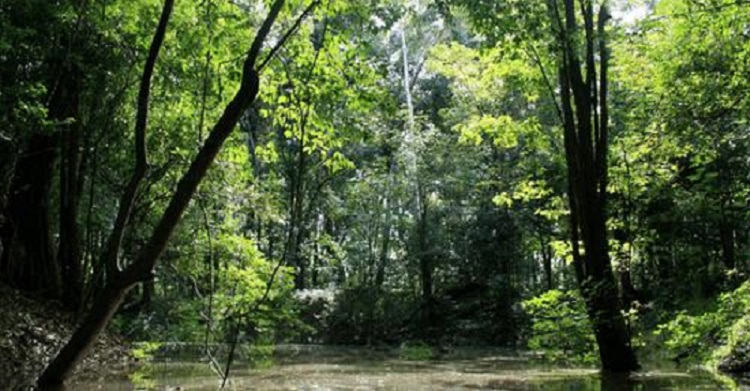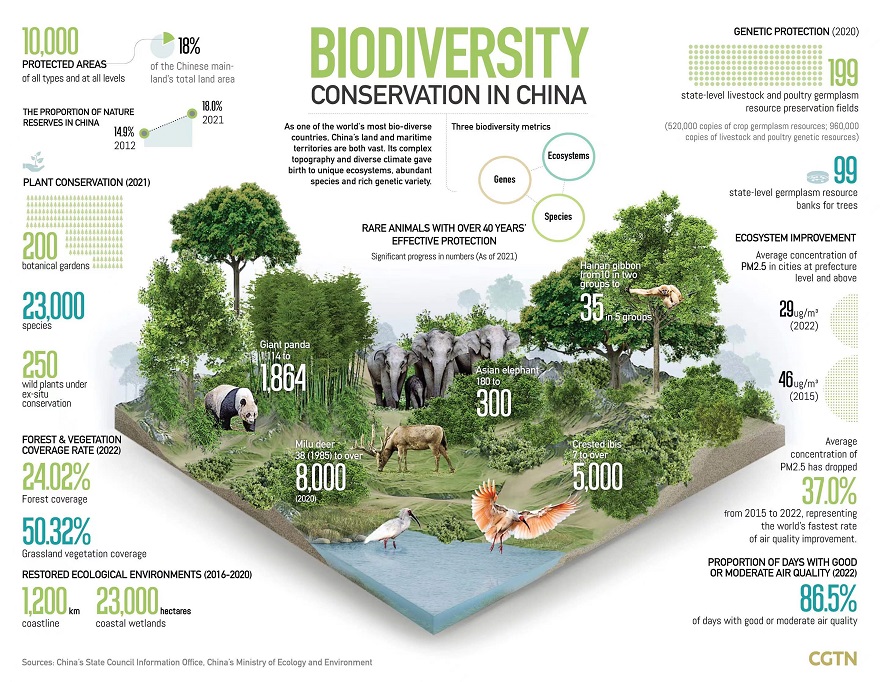
What are biodiversity offsets?
In recent years, biodiversity offsets and credits have been promoted as one of the key ways to finance nature conservation and support global biodiversity goals.
Put simply, “biodiversity offsetting” is a system for placing a value on a habitat, plant or animal, meaning the “credit” or “unit” can be bought or sold to “offset” damage being done, thereby creating a financial incentive to conserve natural assets elsewhere.
Biodiversity-rich developing countries have been demanding more public finance and debt forgiveness from developed countries – which is distinct from climate finance – to help meet their biodiversity targets.
Meanwhile, rich countries, such as Australia, the UK and France, have been promoting and rolling out new “nature markets”, claiming that conservation budgets are stretched and that private finance must play a more prominent part in closing the finance “gap”.
Biodiversity offsetting now sits at the heart of these tensions.
Scientists say that until recently, we were doing development without any due regard for biodiversity and argue that regulation-backed biodiversity markets could “provide a pressure valve by which finance can be generated for proper biodiversity restoration.
Critics of offsetting disagree and say the metrics used are quite simplistic, mechanistic and crude. They question and question the very idea of the economic valuation of nature.
Read more:
How does biodiversity offsetting work and how is ‘nature’ quantified?
Where did the idea of biodiversity offsetting come from?
How do biodiversity offsets differ from carbon offsets?
Biodiversity conservation in China

Biodiversity conservation has been elevated to a national strategy in China, and incorporated into mid- and long-term plans of all regions and fields. There has been a drive to improve the legal and policy framework, strengthen technical support and the training of high-caliber personnel, expand oversight on law enforcement, and encourage public participation in conserving biodiversity, thus improving biodiversity governance.
China has continuously promoted the foundation of nature reserves, built a nature reserve system with national parks as the main focus, taken the lead in proposing and implementing the ecological protection red line system internationally, defined priority areas for biodiversity conservation, protected important natural ecosystems and biological resources, and played an active role in maintaining important species habitats. China has carried out major biodiversity conservation projects, in addition to surveys of natural resources and the monitoring and assessment of ecosystems.
China has identified priority areas for biodiversity conservation and delineated 35 priority areas for biodiversity conservation. Among them, the 32 terrestrial priority areas cover a total area of 2,763,000 square kilometers, accounting for about 28.8 percent of the land area, which is of great significance for the effective protection of important ecosystems, species and their habitats.
China has developed a nature reserve system with national parks as the mainstay. Since 2015, 10 pilot national park systems have been launched, including Sanjiangyuan, and 90 percent of terrestrial ecosystem types and 71 percent of wildlife species of national priority protection have been effectively protected. The habitat space of wild animals has been continuously expanded and the populations have been increasing.
The population of giant pandas in the wild has grown from 1,114 to 1,864 over the past 40 years, and the crested ibis population has increased from only seven to over 5,000. The Asian elephant population in the wild has increased from 180 in the 1980s to about 300 at present, and the Hainan gibbon population in the wild has increased from less than 10 in two groups 40 years ago to 35 in five groups.
A series of ecological protection and restoration projects have been carried out in China too. From 2016 to 2020, a total of 1,200 kilometers of coastline and 23,000 hectares of coastal wetlands were restored. About 25 percent of the global green area that increased from 2000 to 2017 was in China, making it the largest contributor in the world. The forest coverage and the steppe vegetation coverage reached 23 percent and 56.1 percent in 2021, respectively.
Sources:
- Carbon Brief (edited extracts), 27 Sept, 2023. https://interactive.carbonbrief.org/car…/biodiversity.html
- CGTN, 15 May, 2023. https://news.cgtn.com/news/2023-05-15/Graphics-Biodiversity-conservation-in-China-1jOZwSxS9jy/index.html